Home » How to Take Care of Yourself After Hair Transplant?
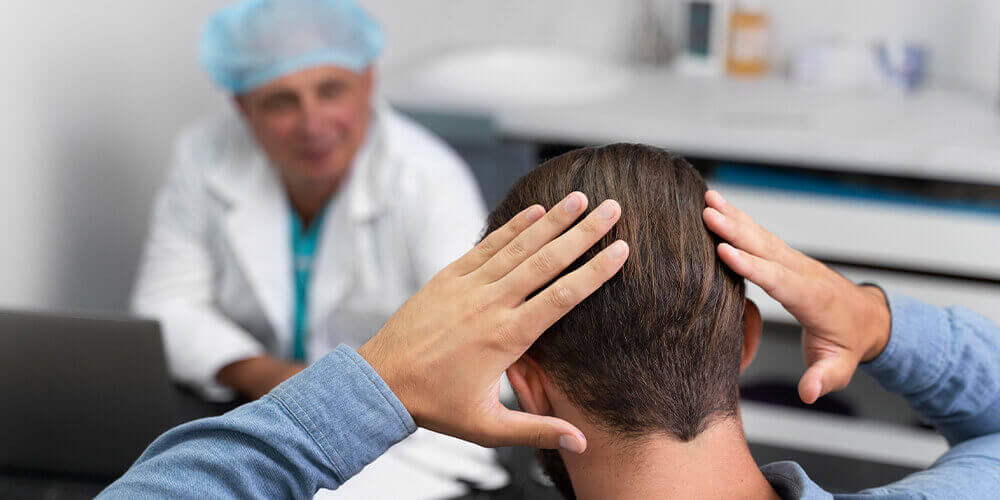
The care of a hair transplant during the first days after the surgical operation, in which the implant has already developed, is summarized in the following: It is highly crucial that the patient not forget to take the medications indicated by the cosmetic surgeon. Most people do not forget to use minoxidil because they know the importance of using minoxidil after a hairline transplant. However, they often forget to use the antibiotic, anti-inflammatory, and analgesic because they do not know their importance during hair transplant in Turkey recovery. Attention! Discontinue the use of aspirin and other medications that contain this ingredient. It is also not recommended to consume natural anti-inflammatories, such as ginger, arnica, cinnamon, and others. During the purification of bacteria process, when the body goes to work purifying the treated area, an inflammation occurs, and this process is important for the implant.
The surgeon who performed the hair transplantation provides patients with a complete after hair care tips and maintenance guide. However, some guidelines focus on hygiene and hair care routine that has a significant influence on capillary health, so the patient should return, and it is inevitable to ask the same questions. The more educated the patient is and has the necessary guidelines, the greater will be the motivation to follow each step in order to achieve the desired final result. It should be noted that the level of care for hair affected by hair transplantation is practically the same as one must make for natural hair, many of which contribute to a general improvement of their health.
Hair transplant in Turkey has been growing in popularity as a solution to hair loss, a problem that affects many men and women. The procedure is a good option for those who want a hairline completely redesigned or suffer from more pronounced baldness, and it promises to make it possible for them to return to their daily activities within a few days. But, only after going through hair transplantation, can we understand that the immediate postoperative period brings some discomfort, which brings anxiety to these men and women. Although the vast majority of experts say that the technique is only a minimally invasive procedure, which does not require hospitalization and does not cause complications, the truth is that we should not forget that to be visible, it involves a surgeon harvesting follicles from a zone with more hair to another zone that has become bald. In order to protect the scalp and minimize discomfort, some hair care tips must be taken during the 15 days after surgery, but other precautions need to be followed punctually in order to achieve the desired results.
The final result depends not only on excellent surgery but also, and above all, on the natural cycle of the follicles transplanted in the scalp. This has an influence over a one-year period, from the preoperative phase to the final result, because the hair continues to grow at its natural rate. If we add to the natural rhythm of the hair with a series of factors such as inadequate diet, stress, and capillary mites, which can weaken the hair follicle and prevent the proper hair growth. That being said, investing in good hair transplant in Turkey is also investing in hair care routine in the months following the procedure.
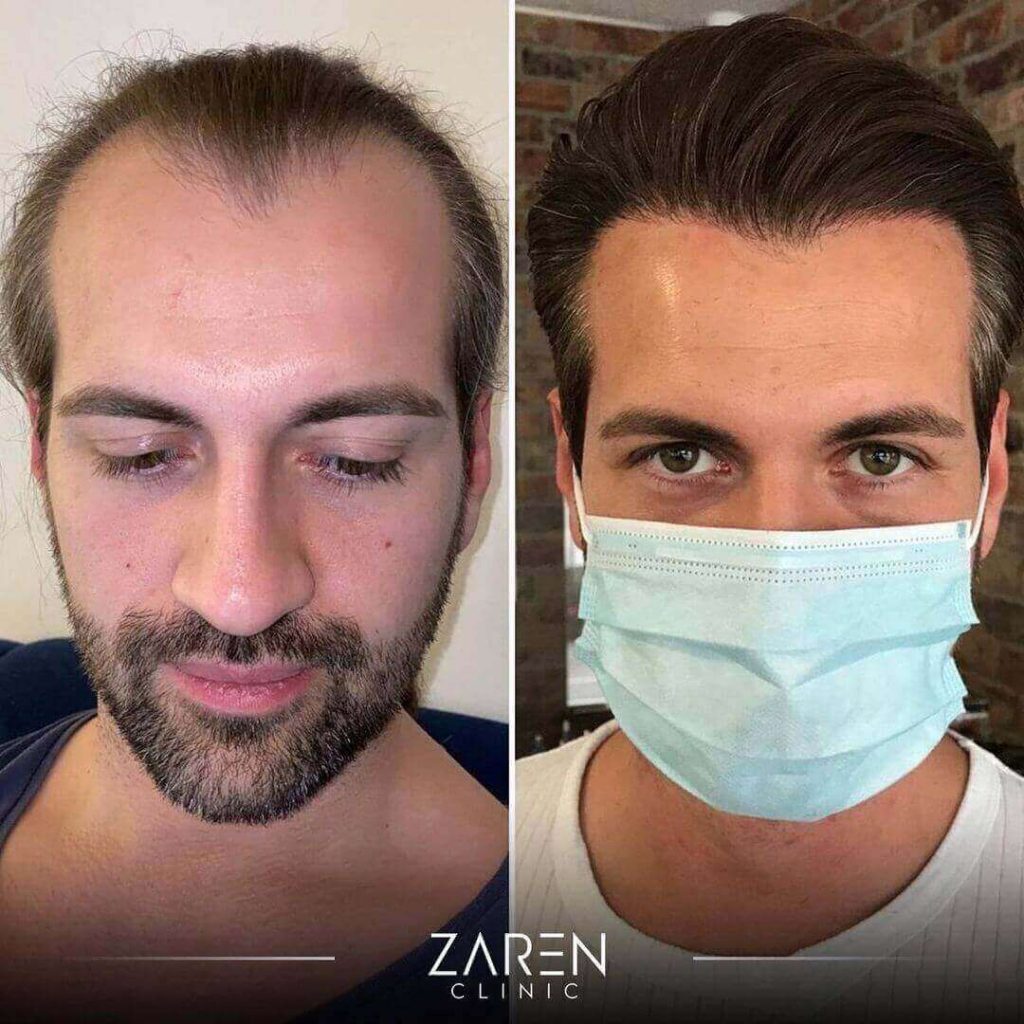
The post-operative hair care routine for a hair transplant in Turkey is essential to rapid healing and hair growth. Important instructions given to patients are: keep recipient area moist for 4-5 days post-operatively, use prescribed medications, not getting sunburned for 10 days, avoid bleeding disorders and substantial handling of grafts while crusts are adherent, physical activity as long as taking care not to damage the grafts, wear loose-fitting or button-up shirts, avoid blood-thinning agents which can lead to bleeding problems, discontinue use of aspirin and alcohol for a few days before the surgical date, avoid exercise for a week, and wear a tight cap.
A hair transplant surgery itself is relatively straightforward and is generally outpatient since it is done under local and mild sedation. Most patients comfortably watch the procedure on television or even engage in conversations with the surgeon and the staff. Physicians performing hair transplants should make hair transplant in Turkey surgery a pleasant and comfortable experience for their patients. Avoidance of using painful injections, micro-stitching techniques, use of local with Xylocaine with adrenaline, consultation with the patient regarding various surgical techniques, hours of continuous access to the transplant physician, good communication with the medical assistants or nurse facilitating the surgery, and allowing patients to watch movies during the hair transplant are a few examples of how hair transplantation can be a somewhat pleasant experience for the follicular unit hair transplantation patient.
In the worst case, the incidence of transplant shaft hair disappearance is fundamentally because the money invested in hair transplant in Turkey surgery only serves to stimulate more support and management. Rapid hair growth also results in the use of CBD or scalp pigmentation. The mature donor hairs may develop new hair and tear out, forming skull pores of a particular exit shape (smelling of smoke and sometimes feeling the seam like a thread or very slightly agitating the extraction process). These pores are excellent focal points for the mechano-sociological treatment of CBD pigments, their size being large enough to allow low-density pigmentation to be performed with minimal interference with natural spheroidal follicle spacing. The permanent follicle’s characteristics are the reason the follicle adapts to the scalp pore to slide into the edge of the redistribution lattice, not to be angularly separated, and to combine the greatest visible loss tissue scar from alopecia at the base of the follicle. When softer than the existing tissue in the surrounding area of the follicle, combined purifying-type electrovanization is performed to configure the convergent elliptical tissue defect. A hair care routine should be taken to avoid removing the clear supine and consume more delicate hair removal.
The importance of very high-quality hair care routine after transplantation cannot be overemphasized. In the subacute and chronic stages, fibrosis can change the architecture of the scalp, making the hair prone to physical damage by acting as a driving force for miniaturization of the grafts, which can occur months or years after the transplant. In addition, there are many common causes of potential noninfectious scarring alopecia that can have their onset or exacerbation years after transplantation. Irradiated, sun-damaged, Adventitia-plumped hair is similar to tourniqued redevelopment hair and it is a theoretical mechanism that causes the nourishing adventitia to die once the accelerating factors are removed and the recipient’s O2 content is too low. Inappropriate postoperative medical treatment is the most common reason to suppress hair development.
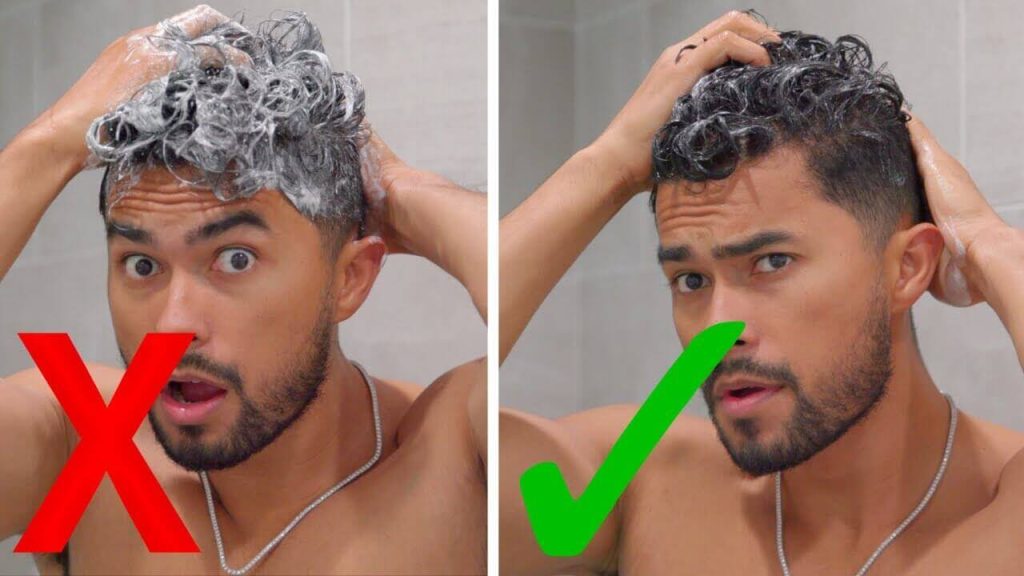
In this study, it is important to describe the correct routine hair care and waiting periods for a successful hair transplantation outcome. Therefore, every hair care product used after hair transplantation and patient comfort was described. Thus, the best grafts are received and the patient can receive the best result right after hair transplantation. Not complying with postoperative hair care tips instructions can lead to various undesirable situations such as infection. Therefore, the patients who need to follow clearly defined hair care routine instructions can consult online with the best postoperative results. In this way, the patient can know how to follow the instructions and what to consider and be protected from possible negative consequences.
The postoperative period after hair transplantation probably comprises the hair care tips needed for the whole of the postoperative period until a good result is achieved. Knowing the hair care process to have a successful hair transplant in Turkey process, minimize the risk of losing the transplanted hair, and protecting the sutured area from infections is crucial for an aesthetically pleasing result. For these reasons, the patient should be aware of the importance of the hair care instructions given by the surgeon preoperatively and should follow these instructions. Various hair care methods and routine hair care applied before hair transplantation adversely affect the achieved favored results.
It is common for swelling to occur in the frontal hairline. However, if swelling does occur, it commonly begins between the second and fourth day and peaks between days three and five. It can last up to one week. It is also normal to have some itching and numbness of the scalp following a hair transplant in Turkey procedure. These conditions usually resolve within a few days or weeks. Each technique involves a different level of care for pain. In the long run, choosing the right doctor and technique, combined with all the necessary post-op hair care tips for the scalp, will result in the least pain and the most natural-looking outcome according to the needs and with the consent of the patient. Redness of the skin is a common result after a hair transplant procedure. You can accelerate the healing process with recommended products and follow post-op hair care routine restrictions.
It is common to experience some pain and discomfort in the scalp following a hair transplant procedure. This initial pain is typically mild in intensity and is relieved with simple painkillers. It usually resolves within a few days to weeks and occurs on the donor and transplanted areas of the scalp.
Once the hair has had a chance to grow and become comfortable in its new location, UV rays will no longer cause long-term damage. Patients should still protect the scalp area, but not for as long as they did right after the surgery. What some doctors might not tell patients is that no amount of sun protection can prevent all UV exposure to the scalp. It is always best to either apply sunscreen spray directly onto the scalp and reapply every two, or use a piece of fabric that has been cut specifically for this purpose. The fabric should be at comfortable resting state when it’s wrapped around the scalp to provide an extra protective layer that doesn’t soak up the sunscreen.
Protecting the transplanted follicles from sun exposure is a key factor for several reasons. First, the scalp will be tender and the last type of healing a patient wants is a sunburn. It can also be extremely sensitive, making wearing a hat and glasses unavoidable if a person needs to go outside for any length of time. Second, although the skin will start to heal quickly, the hair follicles need a little more time before they will be better protected from UV rays again. To make sure the new hair grafts are not damaged by ultraviolet rays, transplant patients should consider avoiding direct sunlight for about one year after the transplant. If a patient must be outside, it’s best to wear a hat and/or use a sunscreen spray on other areas of exposed skin.
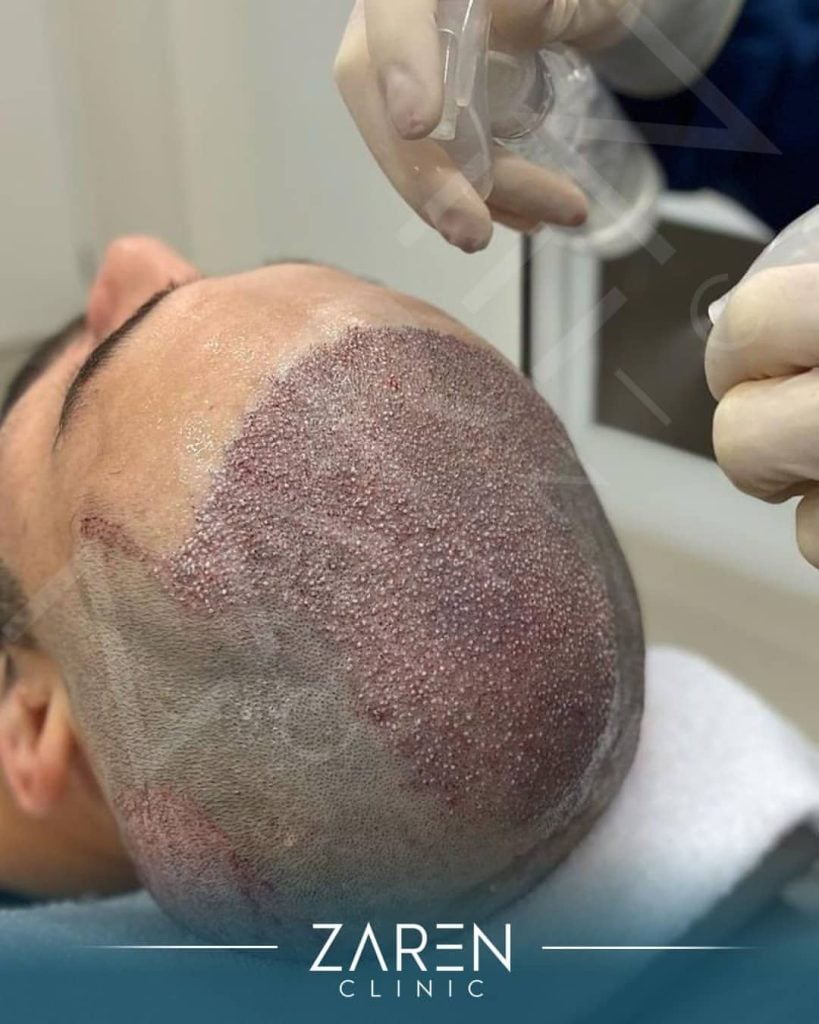
There are a few reasons why Turkey became the leader of FUE hair transplantation” in the world.
The first reason for Turkey’s success in polarizing patients around the world is that hair transplantation is much cheaper than other countries. Patients can save money by taking service from Turkey. Also, parallel to the number of foreign patients coming to Turkey, the quality of health is improving. The activity that ensures the success of Turkey is the accommodation of the treatment in a holiday-concepted manner.
Today, the number of hair transplantation treatments carried out in Turkey constitutes 5 percent of the world market share. That means Turkey is in the first place.
A lot of people all over the world are considering visiting Turkey for hair transplants. The hair transplant in Turkey cost of maintaining your hair can be quite excessive, which is why a lot of people are considering hair transplants. The number of hair transplant in Turkey centers has been increasing over the years. Turkey currently holds the title for being the leading country for hair transplant operations due to their very affordable treatment packages and high success rates. For just a small portion of the price available in other countries, you can get the hair you want in Turkey.
The difference between Turkey and the rest of the world is that the operations in Turkey are highly successful and account for the highest restorative hair transplant success rate. From door to door, the procedure can take anywhere between 2-4 days, which makes it very convenient. When you make use of the domestic airlines, the entire process will be quick and hassle-free. The latest FUE methods are used by the talented experts. The FUE method is a non-surgical method, which means that the procedure is not highly painful. It provides permanent hair without any visible scarring or pains while giving you a natural look. The hair transplant in Turkey cost of this procedure is much cheaper when compared to other places. That is not all. The hair transplant in Turkey cost not only includes assistance for land and air transportation between and within the country but also any post-operative medications, the hotel, the procedure itself, and examination expenses for the individuals.
The number of people considering visiting a hair transplantation clinic has increased drastically over the past few years. It is becoming a very popular option worldwide as more people have come to understand its advantages. One of those benefits is that hair transplant in Turkey has a very high success rate. It is done by specialists who are very skilled in the field. As a result, you can rest assured that the days of having a scalp that reacts to the weather and leaves you feeling embarrassed are over. But while undergoing the operation is something that comes with its challenges, you need to also do some necessary things after the procedure to ensure that you recover well.
Turkey with the well-qualified specialist workforce, modern technology, and a relatively low general cost of labor for high-level health services is one of the countries where hair transplantation is most commonly conducted. Due to lower personnel costs and cheaper overhead, fewer state-level institutions outside of Turkey now exist for these procedures.
Hair transplantation is a modern procedure designed to restore hair density. Its hair transplant in Turkey cost is a function of not only the number of grafts transplanted but also the type of process used. In particular, follicular units (or units of skin with hair follicles) are called natural units or groups of hairs located close to each other. Technologies are available at present for the transfer of between 2000 and 5000 grafts from the donor area (the back of the head) to the recipient area (the top of the head). The hair transplant in Turkey cost varies depending on whether the strip or FUE technique was used, the patient’s age and sex, and the type of how water is used. Due to lower personnel costs and cheaper overhead, fewer state-level institutions outside of Turkey now exist for these procedures.
In conclusion, hair transplantation has now become the most preferred method for the permanent solution of hair loss. After hair transplantation, hair care tips should be taken to ensure that the transplantation area and the hair are protected while allowed to heal. In the days following the hair transplant in Turkey process, care should be taken to protect the hair and transplantation area by doing the right washing and by taking the necessary precautions. This hair care routine should continue for 15 days after the operation. In the 15-day period after hair transplantation, remember not to enter areas such as swimming pools and seaside activities. When hair is fully transplanted 1 year after the operation, the hair strands grow, and you will have twice as much hair as the number of hair strands initially transplanted. With our professional team, we, as Zaren Health, would be very happy to provide you with all the services you need.
The first wash is done in the clinic usually on the second day after the hair transplantation. Expert physicians will show you the tricks of the wash. The washing process is so important that the success of the surgery is related to the washing care. It is medically appropriate for the patient to pause from the overbending or hard work for the first 3 days after the hair transplant in Turkey surgery. First week, hair should be washed dryly. There are several golden rules for the laundry can be listed as follows: do not use shampoo for the first 15 days, rinse and tap the bubbles to squeeze, and the water should be of a weak temperature. If the guidelines for the washing care are properly adhered to, the first hair wash must run smoothly.
After hair transplantation, it is important to wait for a certain period for the new hair to grow. If you want to have a haircut after hair transplantation, it is advisable to wait at least 4 months.
The hair transplant surgery moves hair follicles from one area of the body called the donor site, usually the scalp, to a bald or balding part of the body known as the recipient site. This is mainly done to treat male pattern baldness.
You should be able to wash your hair immediately after the incision and grafting stages. Of course, certain rules have to be followed in order to do this without causing any damage. Patients should wash their hair by applying mild pressure with a cup or jug and avoid pouring water over the head or rubbing the hair too hard in the first few days. After the 5th day, you can adjust the nozzle to give normal pressure and rinse over your head as normal. We do not suggest using a great amount of hot or cold water for the first week. After the 7th day, you will be able to use water of normal temperature and pressure. You should remember that the hair growth process occurs with a combination of hair follicles and skin. Therefore, you must make sure that you do not scrape the skin, etc. It is important to remember that the patient can damage the grafts during the first few days.
You must use only the shampoos and lotions recommended by your doctor and refrain from using alternative products until the washing period is over. How is hair care routine for your hair transplantation will directly affect your end result. Nurturing continued hair care tips is as essential following transplantation as the transplantation itself. Failing the necessary attention, your lifestyle, environmental factors, and non-standard natures of every hair and hair follicle will result in a potential for damage and a failure to live up to your high dollar investment and the time.
Lifting weights and heavy exercise 3 weeks after transplant may be uncomfortable, but the reason for avoiding these workouts is normal. The more a person stays away from hard sports, the better the result and the earlier he or she can return to sports. Most of the things required to be achieved should be done with attention to personal grooming knowledge. Especially when performing personal grooming, the aid of the hair specialist is necessary. No treatment is more effective than the doctor’s instructions. However, if you plan to use cold showers and ignore the doctor’s recommendations in the first 10 days, you should inform your doctor beforehand. You should be prepared for the possibility of decreasing the grafting in a robust operation to be done in case it is desired. Taking hot saunas or Turkish baths during the recovery period of hair transplantation will impair the operation and slow down normal skin healing.
I had a hair transplant 5 days ago, how long should I stay away from the sea after the operation? Can I swim in the pool on the 15th day?
Sea water is harmless and healing. Swimming in the sea 10 days after the transplant is good for both physical and mental well-being. However, waiting 10 days after the transplant and soaking in the sea decreases the itching and eliminates the salt’s negative effects, supporting the purification process. You can swim in the pool 10 days to 2 weeks with pleasure. I think the sea is more convenient and environmentally beneficial. Your doctor will not recommend otherwise.
Signs of normal follicle hair growth typically become apparent in the transplant area a few days to a week after surgery and are seen when the hair starts to shed. Shedding is the process of hair follicles falling out after hair transplant surgery. All the visible hair in the transplant area will eventually shed, and you may notice a significant amount of the transplanted hairs in the days following your procedure. This is expected and is a normal phase of the hair transplant process. Many of the transplanted hairs are initially in a dormant condition, and while resting, the body will expel the follicle to stimulate the hair growth cycle. Some clients prefer to have a week off work following their hair transplant to avoid hair shedding in front of their colleagues. The treatment will work because the hair growth process starts within, and the visible shed hair will prepare the scalp for growth.
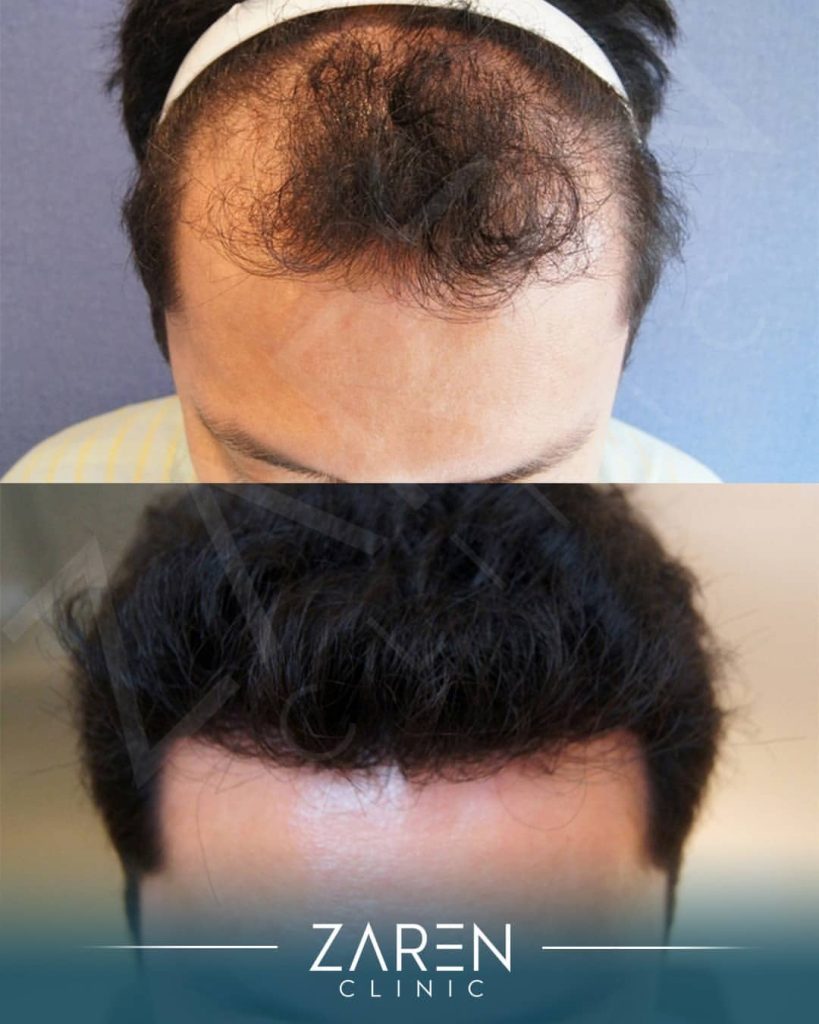
Hair transplant surgery is a permanent solution to genetic baldness with over a 98% success rate. Although following proper aftercare guidelines will prevent any complications, it is important to know about the different post-surgery effects that can occur in the hair transplant area and what they mean. All effects in the recipient area will eventually resolve with time. Some effects are normal and expected during the recovery process and indicate that the hair follicles are healthy and growing, while others can be a sign of problems that could lead to poor or failed results. This guide will inform you about the effects you can expect to see in the recipient area as the hair grows, which effects could happen with certain patients, indications of hair growth, and how to best support your hair during the recovery phase.
It is not common for hair transplantation to be performed in areas where there is no hair, but to insert new hair to augment the existing supply. These cases are generally related to the topic of camouflage or aesthetic improvement of scars. They may be traumatic or surgical or due to acne. The best way to evaluate the possibility of transplantation on a specific area is to first contact a specialized center where it is possible to estimate the viability of the area being proposed. This possibility can normally be evaluated by sending trichoscopic images to centers abroad. This is a service that we can offer in our center, which guarantees a faster and more accurate consultation. The method consists of ascertaining the existence of hair casts on the chosen area, photographing these casts, and analyzing the quality by specialized software in İstanbul.
Hair transplantation is normally performed on the scalp. This is because in cases of androgenetic alopecia or common baldness, the so-called donor area (the occipital area, between the two ears) is not affected by the passage of time. This is the only area of the body in which hair is permanent and which results from the interactions of the hair with the progesterone. The transplanted hair naturally extends and acquires the characteristics of the area of the body in which it has been implanted. In some cases, hair transplants are performed on the face and beard. In these cases, the existing hair is used to increase local density and to fill in any gaps. Only in some cases are we actually transplanting. In such cases, the scalp is used as a donor area. In truth, these cases are those with less satisfaction and higher surgical risk. The rest of the body may one day be suitable for transplant, as researchers are constantly studying the body’s interactions with testosterone.
There are a few considerations for the surgeons treating a teenager or a young adult. The first thing that surgeons consider is whether the person has completed their development. About 18 is the age range when boys will have a more advanced development, though there can be exceptions. The second thing that surgeons consider is why the teenager or young adult is so increasingly concerned with his condition, such as family pressure, bullying, barbershop gossip, etc. Do they need to consider the approach or the method that they will suggest in the intervention. It is well understood that good management decisions demand much more than medical capability because the choice that we make is going to impact that patient for the rest of their life.
According to a study, age is an important contributing factor that influences one of the major criteria used by hair restoration physicians to prioritize which patients should be offered a surgical hair restoration procedure. Allowing young patients to have access to some hair transplant procedures according to certain criteria can be addressed in papers and published guidelines. Adult patient access to immediate surgical hair restoration procedures remains a hot topic for hair restoration surgeons and hair transplant policy considerations.
The biological basis has nothing to do with the patient’s sex, but with the person’s biological sex. After the safety range of 18, hair transplant should be done when the patient is psychologically mature and the surgeon is calm that surgical option is the right treatment because occasionally hair loss is hormonal, but it occasionally is drug-induced.
Hello!